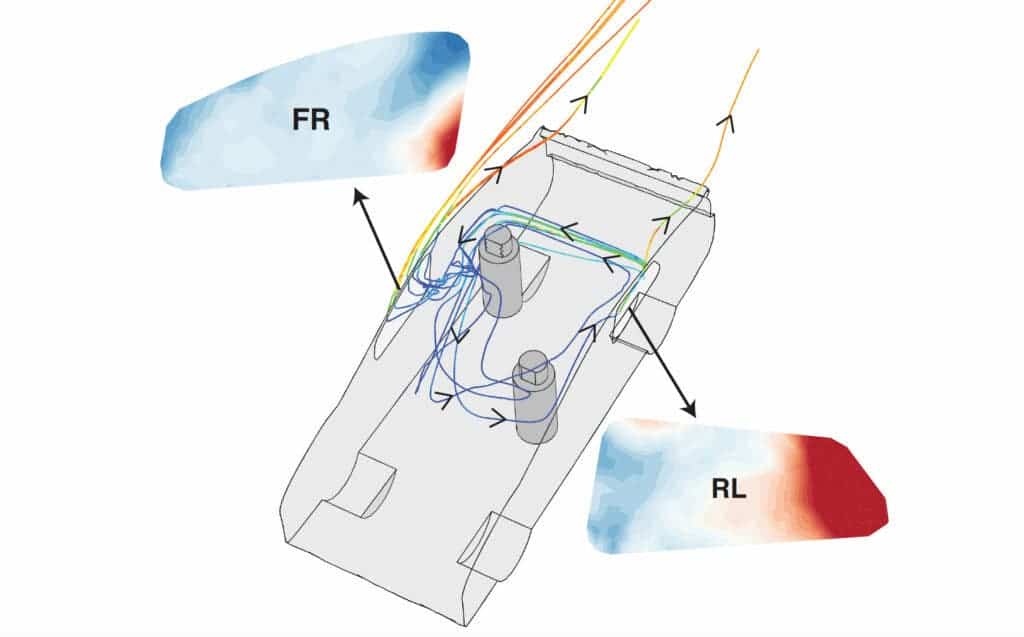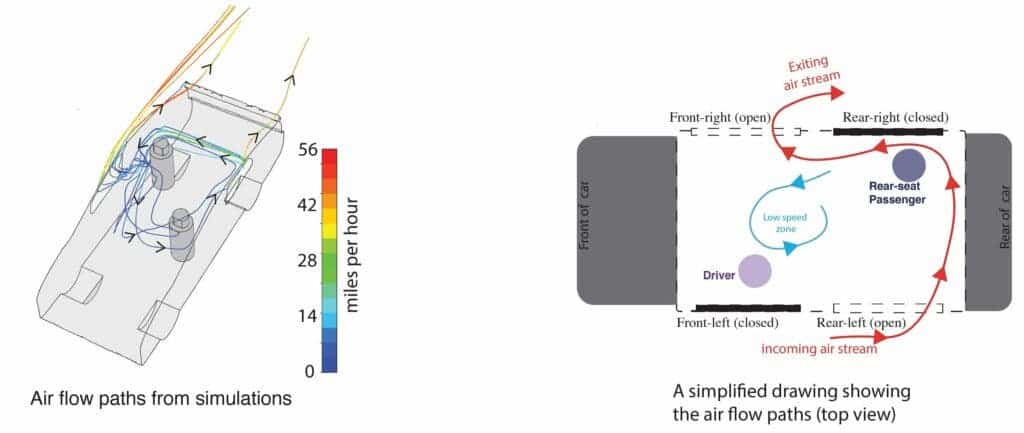Scenario: you’re in a car with someone who’s not from your social bubble. It may be a taxi or a friend, but you’d like to reduce the risk of disease transmission, so what’s the best option?
In a new study, researchers modeled the airflow in this type of situation and calculated how to best reduce the flow of aerosols. Blasting the ventilation system doesn’t work as well as opening the windows, they found. It also matters which windows you open, and some of the findings are pretty counterintuitive.
“Our findings reveal the complex fluid dynamics during everyday commutes, and non-intuitive ways in which open windows can either increase or suppress airborne transmission,” the study authors note.

When it comes to improving airflow in a car, opening windows is the best thing to do. Air conditioning just won’t cut it, say the authors of the new study. Instead, it’s the windows you should look at — the more the merrier.
“Driving around with the windows up and the air conditioning or heat on is definitely the worst scenario, according to our computer simulations,” said Asimanshu Das, a graduate student in Brown’s School of Engineering and co-lead author of the research. “The best scenario we found was having all four windows open, but even having one or two open was far better than having them all closed.”
For obvious reasons, however, opening all four windows every time you’re in a car with someone isn’t exactly practical, especially with winter already here. So let’s say you just want to open one window, or two: which ones?
Intuitively, you’d think that opening the window next to each passenger would be the best thing to do, but that’s not really the case, the researchers say. Instead, it’s better to open the windows opposite to the occupants, the team found.
“When the windows opposite the occupants are open, you get a flow that enters the car behind the driver, sweeps across the cabin behind the passenger and then goes out the passenger-side front window,” said Kenny Breuer, a professor of engineering at Brown and a senior author of the research. “That pattern helps to reduce cross-contamination between the driver and passenger.”
The team also mapped the relative risk in different parts of the car. Because of how air flows across the outside of the car, placing more pressure near the rear windows than the front windows, air tends to enter through the back windows and exit through the front windows. The driver is then more exposed than a backseat occupant, but if occupants sit on opposite sides of the car and open the opposite windows, very few particles can be transferred between the two.

But the researchers also caution that there’s no way to eliminate the risk completely. They say that even if you open all the windows in a car, it’s still not a replacement for face masks — the goal of the study was merely to see how the risk could be lower, not eliminated.
Of course, there are also limitations to the study. The car design could slightly influence air flow, and the models simulated airflow around and inside a car moving at 50 miles per hour (80 km/h). Even so, studies like this are important not just for directing COVID-19 policy, but also for helping each of us make better decisions over the course of the pandemic.
“This is the first study we’re aware of that really looked at the microclimate inside a car,” Breuer said. “There had been some studies that looked at how much external pollution gets into a car, or how long cigarette smoke lingers in a car. But this is the first time anyone has looked at airflow patterns in detail.”
The study was published in Science Advances.


